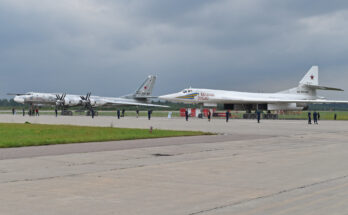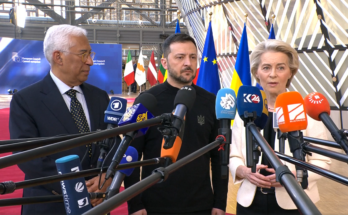by Dan Darling, International Military Markets Analyst, Forecast International.
The U.S. election has been decided and, contrary to the overwhelming predictions by the establishment media and pollsters, Republican candidate Donald Trump will be the country’s next president.
The question for America’s European partners now becomes, what will happen to their relationship with the U.S. under a Trump administration?
Trump has made little secret of his unease at Europe’s lack of investment in its own defense and security requirements. During the campaign, he went so far as to hint that under his leadership, the U.S. might not support some of its NATO allies in the event of an attack on them from Russia owing to “many of them not paying their bills.”
At the same time, Trump often praised Russian President Vladimir Putin and spoke of building a better U.S.-Russia relationship at a time when Moscow’s actions along its former Western Soviet orbit have raised alarm bells in many European capitals.
All of this has made peoples and governments in countries once locked under a harsh Soviet grip during the Cold War – countries such as Poland, Estonia, Latvia and Lithuania – understandably nervous. It has also made the more established, traditional U.S. allies in NATO – France, Germany, Denmark and the Netherlands for starters – uncertain of Europe’s future course vis-à-vis the U.S.
Thus there is worry in Europe, which, despite some traditional anti-Americanism in various political quarters, overwhelmingly sees the U.S. as its natural and most important ally.
An isolationist stance by Washington – particularly if it provides Russia a free hand in the Baltics and the High North (the northern reaches of the Scandinavian Peninsula stretching to the Arctic Region) – would leave many dual EU-NATO members vulnerable on their eastern and northern flanks. U.S. indifference to Europe would also allow Putin to continue interfering in and destabilizing former Soviet nations such as Ukraine, Moldova and Georgia along the southeastern European periphery.
The lack of prior political experience, diplomatic finishing, the intemperate remarks and, above all, the simplicity (and at times coarseness) of Trump’s foreign policy intentions on the campaign trail all combine to spook not only a Europe inherently and openly hostile on the whole to one American political party (guess which one?), but a collection of national leaders with no idea of what to expect.
A first step for the two sides in coming together would be for Trump to look at some facts.
Under a 2001 law mandating so, Poland earmarked 1.95 percent of its annual GDP toward defense. More recently in 2015, it ticked that up to meet the NATO minimum standard benchmark of 2 percent after revising the 2001 law. Poland has also embarked on a wholesale rearmament program that by 2022, or 2024 at the latest, should place the country as one of the premier military nations on the European continent.
The three tiny Baltic nations of Estonia, Latvia and Lithuania are traditionally wary of Moscow and increasingly alarmed by Putin’s approach to Russia’s “near abroad,” as these three nations each feature sizable ethnic Russian-speaking minorities inside their borders. Therefore they are vulnerable to Russia’s declared compatriot policy, which views these people as Russian citizens. Russia provides many of them with passports and utilizes them with varied degrees of success as a fifth column inside neighboring nations’ borders.
But while the Baltic nations have been military investment laggards in the past as they each sought to rebuild their micro-economies from the ashes of a post-communist order, in recent years each has bolstered its respective defense spending levels by double digits.
Estonia has met the NATO minimum standard benchmark of 2 percent every year since 2012, and during the four-year stretch since then has cumulatively increased its overall nominal defense earmark by 72 percent.
Latvia is on a fast-track to meet the NATO standard by 2020 at the latest. Since 2014, when the defense budget equaled a mere 0.91 percent of GDP, Riga has greatly bolstered its defense budgets. Under its 2017 spending plan, it will have increased defense spending by 120 percent over the three-year period beginning in 2015.
Lithuania, meanwhile, has gone from being one of the worst rent-seekers in the NATO Alliance to mirroring Latvia’s crash course. In 2011, Vilnius allocated a mere 0.85 percent of its GDP toward defense. Worse, with funding for the State Border Guard Service and Public Security Service amalgamated within the defense allocation, the core Lithuanian military budget actually totaled a mere 0.75 percent of GDP.
But once again, fast forward to 2014, when, on March 29, in the aftermath of Russia’s Crimean Peninsula takeover in Ukraine, Lithuanian leaders across the political spectrum came together and announced an agreement that called for future defense spending to continue rising up to the 2-percent-of-GDP minimum NATO standard by 2020. What followed were year-on-year defense investment upticks of 33 percent in 2015 and 35 percent in 2016, with 26 percent expected for 2017.
These three Baltic nations, situated along Russia’s strategically important mouth to the Baltic Sea, are eager to be reassured by an incoming administration that – on the campaign trail at least – has failed to give them any reason to feel supported.
Yes, Europe could do more. And yes, Trump’s remarks regarding Europe’s lack of investment in its own defense merely echo those of the former Bush administration and outgoing Obama administration. Furthermore, it was the Obama administration that in 2009 set about forging a “reset” diplomatic approach with Russia that left these same Eastern European, former Soviet Republic nations feeling vulnerable.
Thus a fresh round of diplomatic outreach to Russia by a new administration does not automatically portend serving up the Baltics or Georgia or Nordic partners such as Finland or Norway as some kind of geopolitical sacrifice to appease Moscow.
But a retreating, isolationist United States would leave behind a century worth of hard-won influence, goodwill, and alliances all for the sake of giving Russia a free hand and the possibility that, in return, Putin might make some small concessions on U.S. foreign policy concerns on the margins. The NATO Alliance remains a foundation of joint security, diplomacy and friendship straddling two continents and retains stature in an ever-changing, always-dangerous world.
Still, Trump – like the Bush and Obama administrations before his election victory – is not wrong to prod Europe to do more to enhance its own defense and to strengthen a NATO Alliance under which the U.S. provides the overwhelming bulk of investment and force capability.
In a farewell speech in June 2011 in Brussels before a broad swath of European political elites, then-U.S. Defense Secretary Robert Gates – who served under different administrations from different parties and is widely respected in military/defense circles – blamed Europe for its lack of political will and investment toward defense. He warned America’s European allies that if the situation did not change, future administrations would “not consider the return on America’s investment in NATO worth the cost.”
For both the U.S. and Europe, that time, unfortunately, may be now.
Please feel free to use this content with Forecast International and analyst attributions, along with a link to the article. Contact Ray Peterson at +1 (203) 426-0800 or via email at ray.peterson@forecast1.com for additional analysis.
The Forecast International International Military Markets series examines the military capabilities, equipment requirements, and force structures inventories of 140 countries, with corresponding coverage of the political and economic trends shaping the defense market outlook for individual countries and regions.
For 50 years, Forecast International intelligence reports have been the aerospace and defense industry standard for accurate research, analysis, and projections. Our experienced analysts compile, evaluate, and present accurate data for decision makers. FI's market research reports offer concise analysis of individual programs and identify market opportunities. Each report includes a program overview, detailed statistics, recent developments and a competitive analysis, culminating in production forecasts spanning 10 or 15 years. Let our market intelligence reports be a key part of reducing uncertainties and mastering your specific market and its growth potential. Find out more at www.forecastinternational.com



